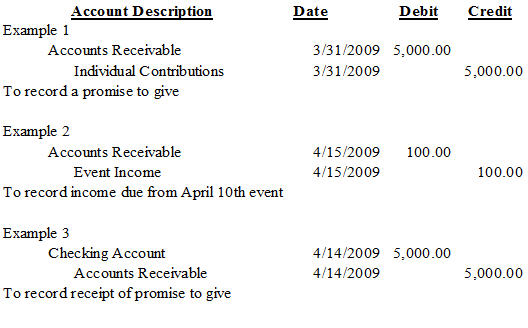
This involves discounting future cash flows to their present value using an appropriate discount rate, which often reflects the lessee’s incremental borrowing rate. This method ensures that the financial statements present a realistic view of the receivables’ worth over time. At rent receivable journal entry transition to ASC 842, the accumulated deferred rent, or accrued rent, for an operating lease is an adjustment to the ROU asset related to the lease. With this journal entry, the accumulated deferred rent is removed from a standalone account to become part of the new ROU asset.
Rent expense on the income statement
Example – On 20th December ABC Ltd received office rent from its tenant in cash 75,000 (25,000 x 3) for the next 3 months ie. Example – On 10th March, XYZ Ltd paid office rent to its landlord by cheque for the same month amounting to 20,000. Show journal entries for office rent paid by cheque in the books of XYZ Ltd. Following are the steps for recording the journal entry for rent paid by cheque.
How Liam Passed His CPA Exams by Tweaking His Study Process

Hence, the company needs to record the accrued rent revenue that it has earned during the period in order to comply with the accrual basis of accounting. Revenue should be recognized when it is earned, regardless of the time of receiving cash. Likewise, the company should make the journal entry for the accrued rent revenue that it has earned during the accounting period. Most businesses that account for revenue and expenses in accordance with Generally Accepted Accounting Principles (GAAP) use an accrual basis of accounting. Accrual accounting employs two core principles for every account you maintain on the company’s books. These two principles require that you recognize income on your financial statements in the period you earn it, meaning you satisfy your side of the transaction, and when the income is realizable.
Deferred rent
It is important to note the difference between rent receivable and rent revenue accounts when recording transactions in the accounting records. The amount of rent receivable is used to balance the total amount of revenue earned for the period and the amount of rent revenue is used to update the income statement. Accrued rent receivable is an accounting term that refers to the amount of rent a property owner or landlord has earned but has not yet received from a tenant. This receivable arises when a tenant has used a rented property during a specific accounting period but has not yet paid the rent for that period. Accrued rent receivable is commonly found on a property owner’s balance sheet and represents the expected cash inflow from the tenant’s rent payment.
Late Fee Accounting Entries: Financial Impact and Best Practices
This approach provides a more accurate picture of revenue and outstanding obligations. Accurately measuring and valuing rent receivable is fundamental to maintaining reliable financial records. The process begins with determining the present value of future rent payments, especially in long-term leases.
What are the prerequisites for recording an entry?
Addressing impairment and write-offs in rent receivable is a nuanced aspect of lease accounting that requires careful consideration. Impairment occurs when there is a significant decline in the expected recoverability of rent receivables, often due to tenant financial difficulties or broader economic downturns. Identifying impairment involves a thorough analysis of the tenant’s payment history, current financial health, and any external factors that might impact their ability to meet lease obligations. Rent receivable plays a significant role in lease accounting, particularly under the guidelines set forth by standards such as IFRS 16 and ASC 842. These standards have reshaped how leases are recognized on financial statements, emphasizing the need for transparency and consistency.
- This not only enhances security but also simplifies the reconciliation process, reducing the risk of discrepancies and disputes.
- Accrued rent is a liability that represents the obligation incurred for the use of an asset owned by a third party.
- Under ASC 840, accounting for rent in operating leases was straightforward.
- Rent receivable is fundamentally tied to the contractual agreements between landlords and tenants.
- This lag can create a disconnect between reported earnings and available cash, posing challenges for managing day-to-day expenses and obligations.
- Advanced accounting software can facilitate this by integrating sales data and adjusting receivables accordingly.
Each type of rent may have different recognition criteria and may need to be recorded separately to provide a clear and comprehensive view of the financial obligations and entitlements. The Rent Receivable account is important in tracking the amount of money that has been earned but not yet collected from tenants. It is important to monitor this account, as it can alert the landlord to any delinquent payments or any other issues that need to be addressed.
Under ASC 840, a rent accrual liability was recorded in periods when rent was incurred, because the company used or occupied the leased asset and not yet made a payment. The entity received the economic benefit of the leased asset in the period and has an obligation to pay for the benefit it received. Accrued rent is caused by a timing discrepancy between the expense being incurred and recorded. For example, if payments are made quarterly at the end of the quarter, expense will need to be recorded each month, before payment.
The company can make the journal entry for the accrued rent revenue by debiting the rent receivable account and crediting the rent revenue account. If a business does not own an office premise it may decide to hire a property and make periodical payments as rent. Such a cost is treated as an indirect expense and recorded in the books with a journal entry for rent paid.
The total lease expense of $115,639 is recognized at the end of the first year. Total lease expense is the sum of the liability lease expense of $29,126 and asset lease expense of $86,513. The credit side of the entry at the end of the first year will include the cash paid for the first year of $100,000. At the end of the lease, the total cash paid and the total expense recognized were the same, and therefore the cumulative balance in the deferred rent account for each individual lease equalled zero.

